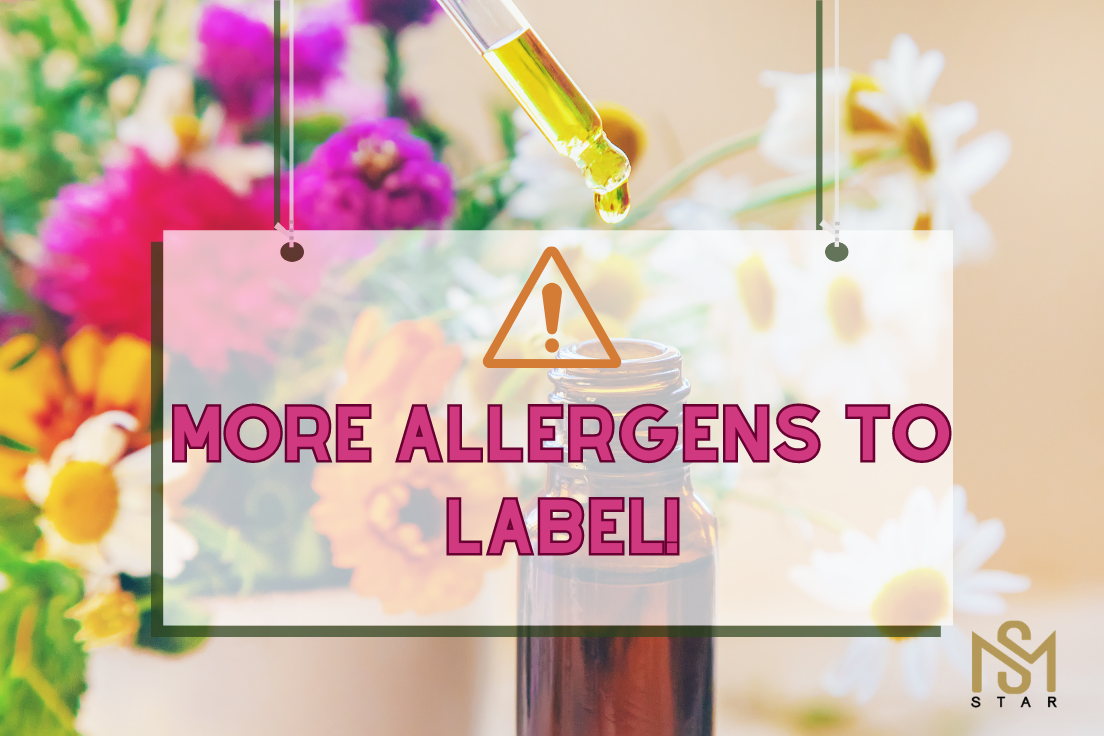MORE ALLERGENS ADDED TO THE LABELS!
As the industry and regulation experts have been waiting for a long time, a new Commission Regulation on the labeling of fragrance allergens in cosmetic products has been published in the EU Official Journal dated 27 July 2023. Published Regulation No. 2023/1545, added new ingredients (allergens) to be labeled when present in concentrations exceeding 0.01% in rinse-off products and 0.001% in leave-on products.
The new allergens that should be listed on the labels are as follows:
- Pinus Mugo
- Pinus Pumila
- Cedrus Atlantica Oil/Extract
- Turpentine
- Alpha-Terpinene
- Terpinolene
- Myroxylon Pereirae Oil/Extract
- Rose Ketones
- 3-Propylidenephthalide
- Lippia citriodora absolute
- Methyl Salicylate
- Acetyl Cedrene
- Amyl Salicylate
- Anethole
- Benzaldehyde
- Camphor
- Beta-Caryophyllene
- Carvone
- Dimethyl Phenethyl Acetate
- Hexadecanolactone
- Hexamethylindanopyran
- Linalyl Acetate
- Menthol
- Trimethylcyclopentenyl Methylisopentenol
- Salicylaldehyde
- Santalol
- Sclareol
- Terpineol
- Tetramethyl acetyloctahydronaphthalenes
- Trimethylbenzenepropanol
- Vanillin
- Cananga Odorata Oil/Extract
- Cinnamomum Cassia Leaf Oil
- Cinnamomum Zeylanicum Bark Oil
- Citrus Aurantium Flower Oil
- Citrus Aurantium Peel Oil
- Citrus Aurantium Bergamia Peel Oil
- Citrus Lemon Peel Oil
- Lemongrass Oil
- Eucalyptus Globulus Oil
- Eugenia Caryophyllus Oil
- Jasmine Oil/Extract
- Juniperus Virginiana Oil
- Laurus Nobilis Leaf Oil
- Lavandula Oil/Extract
- Mentha Piperita Oil
- Mentha Viridis Leaf Oil
- Narcissus Extract
- Pelargonium Graveolens Flower Oil
- Pogostemon Cablin Oil
- Rose Flower Oil / Extract
- Santalum Album Oil
- Eugenyl Acetate
- Geranyl Acetate
- Isoeugenyl Acetate
- Pinene
Other Changes and Transition Period
In addition, the law aligned the names of existing allergens with the names in the latest Common Ingredients Glossary and made updates to the CAS and EC numbers of the ingredients. The law also grouped similar ingredients into a single entry.
The regulation considers the transition period specified in the published draft valid. That’s why beauty brands have to adapt labels to new requirements according to the timelines below.
- Within 3 years for new cosmetic products to be placed on the market in the European Union;
- Within 5 years for cosmetic products already in the European Union


